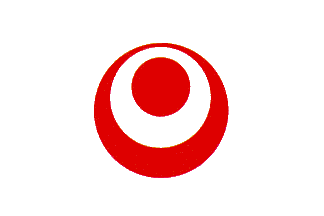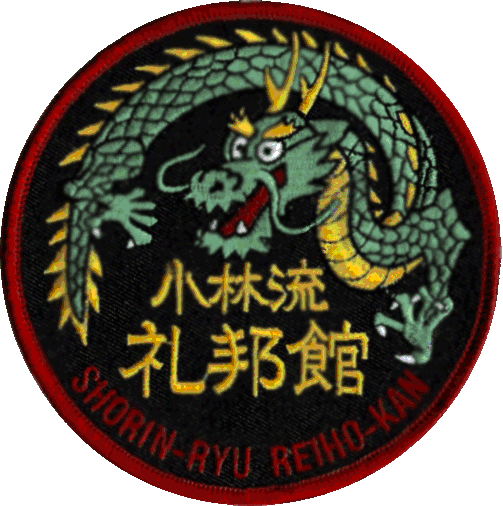Karate dates to the sixth century when Bodhidharma's (Daruma), born in India, travels took him to China where he settled at a Shao-lin (Shorin in Japanese) Monastery. The introduction of ch’uan-fa ("fist way") occurred in the late 1300’s with the expansion of trade and cultural exchanges between Okinawa and China. Evidence suggests that te ("hands"), in fact, was indigenous to Okinawa, (the birthplace of Karate), developing in the villages of Shuri, Naha and Tomari. Thus begins the lineage of Shorin-Ryu Kobayashi Karate from the Okinawan Shuri-te system.
Takahara Pechin was revered as a great warrior and is attributed to have been the first to explain the aspects or principles of the do ("way"). Pechin was a social class of the Ryukyu Kingdom.
These principals are: 1) ijo, the way-compassion, humility and love. 2) katsu, the laws-complete understanding of all techniques and forms of karate, and 3) fo dedication-the seriousness of karate that must be understood not only in practice, but in actual combat. The collective translation is: "One’s duty to himself and his fellow man." He was the first teacher of Sakukawa "Tode" Kanga who was to become known as the "father of Okinawan karate.".
These principals are: 1) ijo, the way-compassion, humility and love. 2) katsu, the laws-complete understanding of all techniques and forms of karate, and 3) fo dedication-the seriousness of karate that must be understood not only in practice, but in actual combat. The collective translation is: "One’s duty to himself and his fellow man." He was the first teacher of Sakukawa "Tode" Kanga who was to become known as the "father of Okinawan karate.".
Kusanku, also known by Kwang Shang Fu, or Kosokun was a Chinese martial artist who lived during the 1700s. He is credited as having an influence on virtually all karate-derived martial arts.
Kusanku learned the art of Ch'uan Fa in China from a Shaolin monk. Around 1756, Kusanku was sent to Okinawa as an ambassador of the Ming Dynasty. He resided in the village of Kanemura, near Naha City. During his stay in Okinawa, Kusanku instructed Satunuku Sakugawa.
Sakugawa trained under Kusanku for six years. After Kusanku's death (around 1762), Sakugawa developed and named the Kusanku kata in honor of his teacher.
Satunuku Kanga Sakukawa (1782 - 1838 or 1862) was an Okinawan martial artist who played a major role in the development of Te, the precursor to modern Karate. In 1750, Sakukawa (or Sakugawa) began his training as a student of an Okinawan monk, Peichin Takahara. After six years of training, Takahara suggested that Sakukawa train under Kusanku, a Chinese master in Ch'uan Fa. Sakukawa spent six years training with Kusanku, and began to spread what he learned to Okinawa in 1762. Sakukawa's most famous student, Sokon Matsumura, went on to create the Shorin-ryu style of karate.
Sokon Matsumura ( 1809 - 1899) was one of the well-known original karateka of Okinawa.
He studied Chuan Fa (Kempo in Japanese) in China as well as other martial arts and brought what he learned back to Okinawa, where he taught a select few students and became a well-known master. He was appointed instructor and bodyguard to the king of the Ryukyu Islands. After Japan assumed full control of Okinawa 40 years later, however, Matsumura Sensei moved to Tokyo and taught and developed karate for the rest of his life.
Matsumura was recruited into the service of the Sho family (the royal family of Okinawa) and eventually became the chief martial arts instructor and bodyguard for the Okinawan King. At some point in his career, c. 1830, he went to China and studied the Shaolin style (Shorin-ryu) of Chinese Kempo (fist method) and weaponry. It is also known that he traveled to Foochow in Fukien (Fujian) Province,China on numerous occasions as an envoy for the Okinawan King, as China was co-ruler of Okinawa along with Japan. After his return from China he organized and refined the Shorin-ryu system of Okinawan Karate (known simply as Te).
Matsumura is credited with passing on the kata or formal exercises of Shorin-ryu Kempo-karate known as Naihanchi I & II, Passai Dai, Seisan, Chinto, Gojushiho (fifty-four steps of the Black Tiger), Kusanku (the embodiment of Kusanku's teaching as passed on to Tode Sakugawa) and Hakutsuru (White Crane). The Hakutsuru kata contains the elements of the White Crane system taught within the Shaolin system of Chinese Kempo. Another set of kata, known as Chanan in Matsumura's time, is said to have been devised by Matsumura himself and was the basis for Pinan I and II. Matsumura's Ryu has endured to the present day and the above mentioned kata are the core of Shorin-ryu Karate today.
Matsumura was given the title "Bushi" meaning "warrior" by the Okinawan King in recognition of his abilities and accomplishments in the martial arts. In fact, Matsumura fought many times and was never defeated. His martial arts endeavors have been the progenitor of many contemporary karate styles: Shorin-ryu, Shotokan, and Shito-ryu, for example. Ultimately, all modern styles of karate that evolved from the Shuri-te lineage can be traced back to the teachings of Bushi Matsumura.
While Itosu did not invent karate himself, he codified the kata (forms) learned from his master, Matsumura, and taught many karate masters. Itosu's students included Choyu Motobu (1857–1927), Choki Motobu (1870–1944), Kentsu Yabu (1866–1937), Chomo Hanashiro (1869–1945), Gichin Funakoshi (1868–1957), Moden Yabiku (1880–1941), Kanken Toyama (1888–1966), Chotoku Kyan (1870–1945), Shinpan Shiroma (Gusukuma) (1890–1954), Anbun Tokuda (1886–1945), Kenwa Mabuni (1887–1952), and Choshin Chibana (1885–1969).
Anko Itosu was born in 1831 and died in 1915. Itosu was small in stature, shy, and introverted as a child. He was raised in a strict home of the keimochi (a family of position), and was educated in the Chinese classics and calligraphy. Itosu began his tode (karate) study under Nagahama Chikudon Peichin. His study of the art led him to Sokon Matsumura. Part of Itosu's training was makiwara practice. He once tied a leather sandal to a stone wall in an effort to build a better makiwara. After several strikes, the stone fell from the wall. After relocating the sandal several times, Itosu had destroyed the wall.
Itosu served as a secretary to the last king of the Ryukyu Islands until Japan abolished the Okinawa-based native monarchy in 1879. In 1901, he was instrumental in getting karate introduced into Okinawa's schools. In 1905, Itosu was a part-time teacher of To-te at Okinawa's First Junior Prefectural High School. It was here that he developed the systematic method of teaching karate techniques that are still in practice today.[citation needed] He created and introduced the Pinan forms (Heian in Japanese, Pyung Ahn in Korean) as learning steps for students, because he felt the other forms (kata in Japanese, hyung in Korean) were too difficult for schoolchildren to learn. The five Pinan forms were created by drawing from two older forms: kusanku (Korean: kong sang koon) and chiang nan (Korean: jae nam) Itosu is also credited with taking the large Naihanchi form (tekki in Japan) and breaking it into the three well-known modern forms Naihanchi Shodan, Naihanchi Nidan, and Naihanchi Sandan. In 1908, Itosu wrote the influential "Ten Precepts (Tode Jukun) of Karate," reaching beyond Okinawa to Japan. Itosu's style of karate came to be known as Itosu-ryu in recognition of his skill, mastery, and role as teacher to many.
After the death of Anko Itosu in 1915, one of Itosu's most senior students, Choshin Chibana, wanted to continue to teach the Shorin-ryu style of karate he learned from his instructor. Chibana named his system Shorin-ryu, but using the Chinese characters for "small" and "forest". Chibana lineage schools are commonly referred to as "kobayashi", but this is technically incorrect, as Chibana never used this term to refer to his karate. It was meant to be “Shorin” as tribute to the Shaolin Temple. (Shorin is the Japanese and Okinawan pronunciation of Shaolin). However, he believed strongly that Shorin-ryu was largely Okinawan and purposely modified the first character from the Chinese "Shao/Sho" so it would retain its originality. As other schools later adopted the name "Shorin-ryu," the term "kobayashi" was probably added to describe which exact characters were used to write the term "Shorin," but
was never meant to be the official name of the style. In 1920, Chibana opened his first dojo in Torihori. Spellings such as "Tottoribori" or "Tottori-cho" are erroneous and incorrect. The old name of Torihori was Tunjumui, so it is unknown where these erroneous names came from. He later taught in places such as Gibo, Yamakawa, Naha, Kumoji and Asato, with the main Chibana dojo being in Yamakawa.
Chibana taught this style of Shorin-ryu until his death in 1969. Each of his top students went on to teach his own branch of Shorin-ryu: Nakama Chozo created Shubokan, Yuchoku Higa created Kyudokan, Katsuya Miyahira created Shido-kan, Shugoro Nakazato created Shorinkan, Naonobu Ahagon created Reihokan.
References
Murakami Katsumi, Karate no Kokoro to Waza, 1991.
Nakamoto Masahiro, Okinawa Dentou Kobudo, 2006.
Sells, John. Unante, 1996
Wikipedia.org
For More Info on Shorin-Ryu Reihokan
Please feel free to contact us @
reihokan@gmail.com
Web Site Designed and Hosted by M. Spear © at Homestead™
Video History on Okinawan Karate
Video on Okinawan Karate
Okinawan Music Festival
Okinawan Music & Dance
Video Links:
Ahagon Hanshi - Kama Kata

Shorin-Ryu Reihokan Karate-Do & Kobudo
Our History

